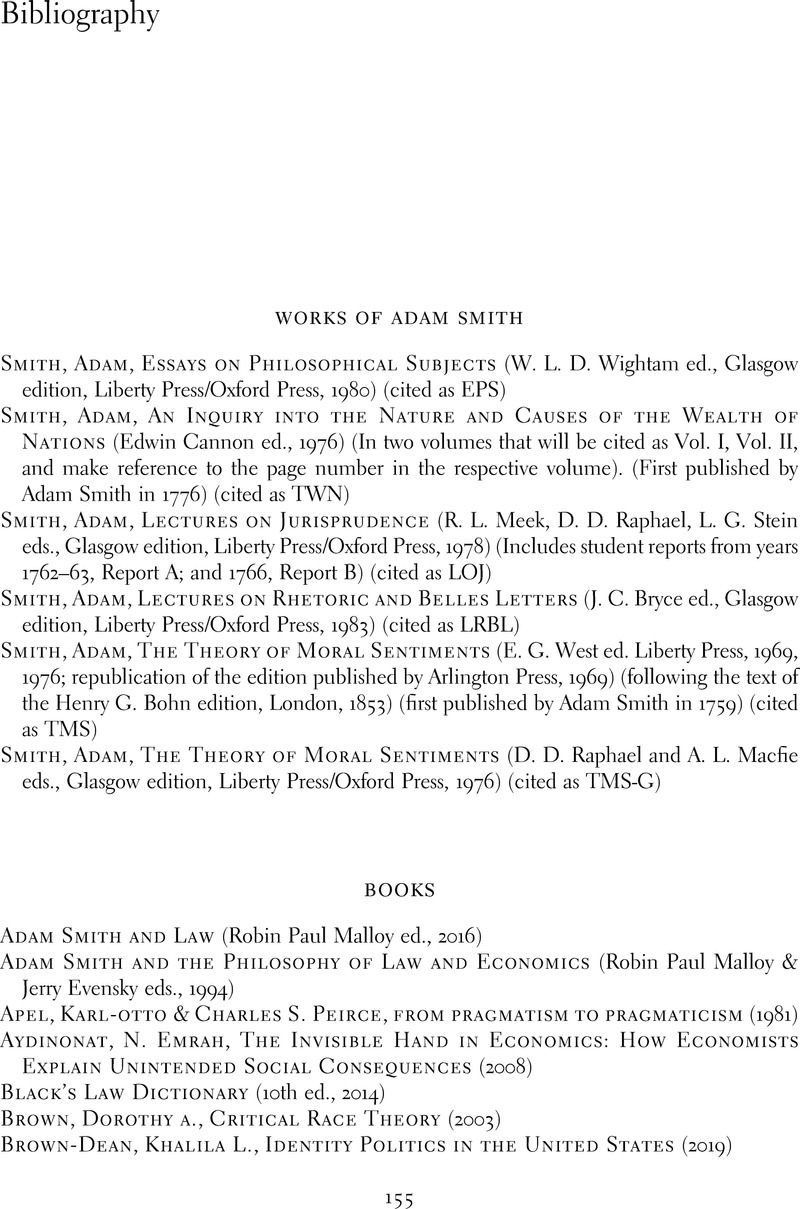Book contents
- Law and the Invisible Hand
- Law and the Invisible Hand
- Copyright page
- Dedication
- Contents
- About the Cover
- Figures
- About the Author
- Preface
- Acknowledgments
- Guide to Citations by Adam Smith
- 1 Introduction
- 2 Setting the Stage
- 3 Social Organization in the Informal Realm
- 4 Social Organization in the Formal Realm
- 5 Integrating the Informal and Formal in Smith’s Theory
- 6 The Spectator View
- 7 Judgment and Justice
- 8 The Sentiment of Common Interest
- 9 The Impartial Spectator, Homo economicus, and Homo identicus
- 10 Understanding the Four Stages of Progress
- 11 Adam Smith in American Law
- 12 Parting Thoughts
- Bibliography
- Index
- References
Bibliography
Published online by Cambridge University Press: 27 September 2021
- Law and the Invisible Hand
- Law and the Invisible Hand
- Copyright page
- Dedication
- Contents
- About the Cover
- Figures
- About the Author
- Preface
- Acknowledgments
- Guide to Citations by Adam Smith
- 1 Introduction
- 2 Setting the Stage
- 3 Social Organization in the Informal Realm
- 4 Social Organization in the Formal Realm
- 5 Integrating the Informal and Formal in Smith’s Theory
- 6 The Spectator View
- 7 Judgment and Justice
- 8 The Sentiment of Common Interest
- 9 The Impartial Spectator, Homo economicus, and Homo identicus
- 10 Understanding the Four Stages of Progress
- 11 Adam Smith in American Law
- 12 Parting Thoughts
- Bibliography
- Index
- References
Summary

- Type
- Chapter
- Information
- Law and the Invisible HandA Theory of Adam Smith's Jurisprudence, pp. 155 - 164Publisher: Cambridge University PressPrint publication year: 2021



